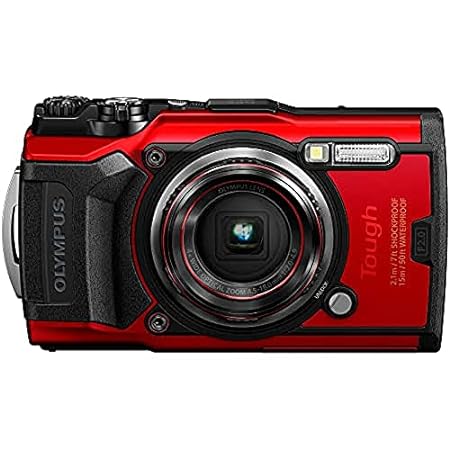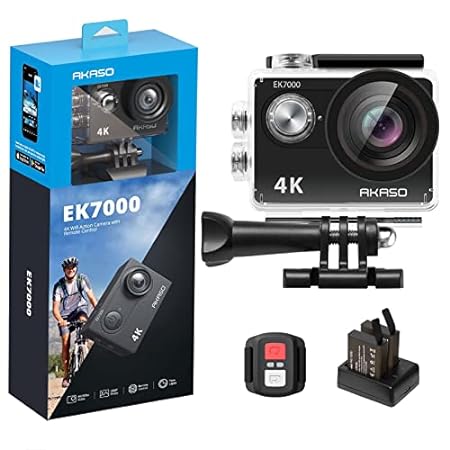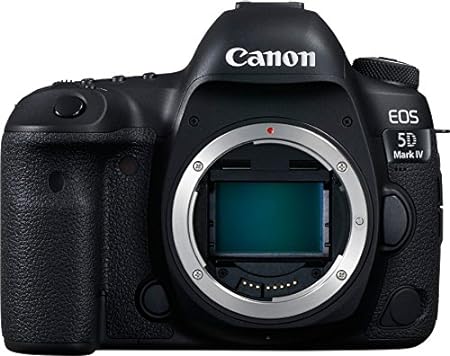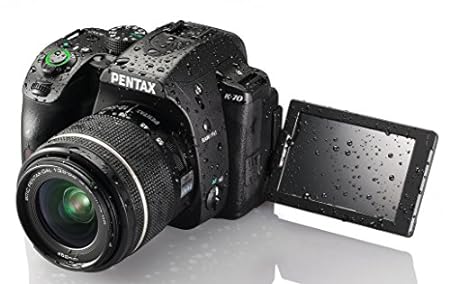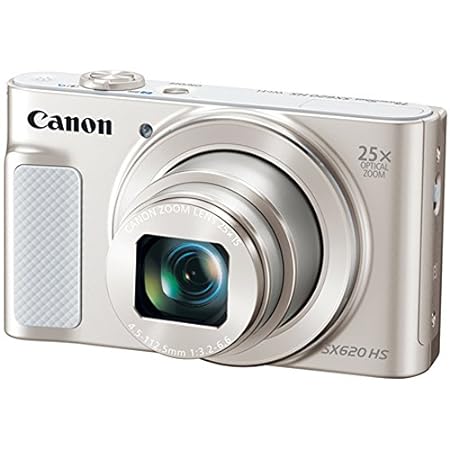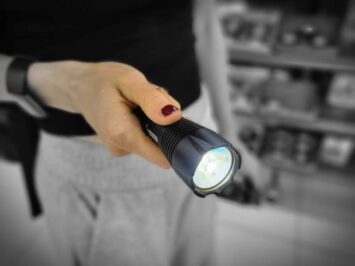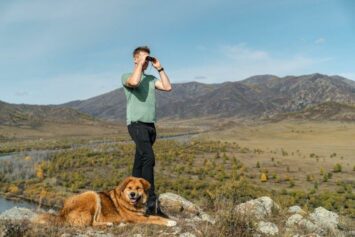Gearing up to hit the trails but figuring out the best outdoor camera to document your adventure in the harsh elements! With so many camera options available, how do you choose the perfect one optimal for hiking and the unpredictability of the great outdoors? Fortunately, that’s where I come in.Drawing from years of expertise in the great outdoors and in-depth research, I’ve tailored this roundup product review specifically to help you find the best cameras for hiking.
From lightweight compact models to fully-featured DSLRs that thrive in extreme conditions, trust that you won’t be lacking options. By considering the key features such as waterproofing, image quality, size, and durability, we’ve got you covered on all fronts. Join me in unpacking each camera’s highs and lows, assisting you in making a well-informed decision that matches your style and preferences.
Remember, the quality of your hike images should not be a trade-off for camera durability or vice versa. Embark on your hiking expedition confidently, knowing you’re equipped with the best camera that’s tailored to your needs.

Quick Navigation
ToggleWhat is the Best Camera for Hiking?
We have compiled for you the top 5 Best Camera for Hiking in 2024. In this article we go through the products that we have used ourselves, checked what other users thought about them and we ranked them accordingly.
With years of experience with hiking cameras and having used several cameras for hiking you can trust our review.
Moreover, you can scroll to the end of this review to see our mini buying guide as well as the answers to some of the frequently asked questions about cameras for hiking.
1. Olympus Tough TG-6 Waterproof Camera
| Specs |
|---|
| Price: 💲💲 (fewer 💲 = cheaper) Size: 4.4 x 2.6 x 1.3 inches (11.2 x 6.6 x 3.3 cm) Optical Sensor Resolution: 12 megapixels Optical Zoom: 4 x Video Capture Resolution: 4K UHD |
This camera is weather-sealed, making it waterproof, dustproof, shockproof, crushproof, and freezeproof. Its design can withstand harsh weather conditions and is compact and robust for outdoor activities such as hiking. It is also one of the best underwater photography cameras in its class. However, its lightweight, exceptional photography, and rugged construction make it my top choice.
The TG-6 features a macro lens for taking clear close-up pictures, while its ultra HD 4K feature ensures that your photos have better color and detail. However, the camera does not come with a lens cover, so you might need to get one separately, which may be a slight drawback. But on the positive side, it does have a decent battery life that ensures you capture all the photos you need in between charges.
Pros
- Waterproof to 50 feet underwater, Macro lens for close up photographs,
- Lightweight and robust construction,
- Ultra HD 4k and F2.0 lens for clear pictures
Cons
- Does not come with a lens cover
2. AKASO EK7000 4K WiFi Sports Action Camera
| Specs |
|---|
| Price: 💲 (fewer 💲 = cheaper) Size: 2 x 1.5 x 0.9 inches (5.1 x 3.8 x 2.3 cm) Optical Sensor Resolution: 12 megapixels Video Capture Resolution: 2K UHD |
In search of a quality and cost-efficient camera for your hiking escapades? The AKASO EK7000 4K WiFi Sports Action Camera is your go-to tech companion. Slotted as a prime budget option, it pulls its weight alongside competitors like the Olympus Tough TG-6 Waterproof Camera, beaming with ultra HD 4K capabilities for outstanding picture quality.
Weighing a mere 0.75lbs, the AKASO EK7000 won’t add unnecessary burden to your hiking gear. Its admirable features include a WiFi application, allowing you to transfer images directly to your phone and upload to your social media platforms. However, please bear in mind to check its mobile compatibility, akin to the Canon PowerShot SX620’s app feature.
Equipped with a 170-degree widescreen lens, this camera is proficient at capturing panoramic photos on your hikes. Accompanied by various accessories engineered for mounting flexibility, it can also transition into a handy dashcam when you’re not on the trail. The AKASO EK7000 offers multiple shooting modes from loop recording, burst photo to time-lapse, thus giving you the versatility to capture anything from the vast landscapes to your achievement of conquering irksome inclines. Albeit impressive, it harbors slight drawbacks, such as the lack of image stabilization for shooting moving subjects and struggles with capturing clear photos in low-light conditions.
Pros
- 4K Ultra HD and wide angle view,
- WiFi and HDMI facilities for seamless media transfer,
- 100-feet waterproof capability,
- Two rechargeable batteries included,
- Wireless remote control for easy operation.
Cons
- Might struggle in low-light settings,
- Some mobile compatibility issues with the app,
- Absence of image stabilization
3. Canon EOS 5D Mark IV
| Specs |
|---|
| Price: 💲💲💲💲 (fewer 💲 = cheaper) Size: 5.9 x 4.6 x 3 inches (15 x 11.7 x 7.6 cm) Optical Sensor Resolution: 30.4 megapixels Optical Zoom: 1 x Video Capture Resolution: 2160 p |
Canon is one of the biggest camera manufacturers with a wide range of technologies that improve the user’s experience. The Canon EOS 5D is one of the best cameras for professional landscape and wildlife photographers. It is why this camera is the best premium choice on my list. The EOS 5D features Canon’s dual pixel CMOS AF and 6 point AF system, which improves autofocus, allowing you to capture focused and clear photos. The touch screen interface allows easy subject tracking, while the built-in WiFi and GPS enable you to set up, take photos, and share remotely with compatible mobile devices.
However, the GPS function may have restrictions in some countries or regions. Other users found that the battery does not last long when using the WiFi to connect the camera remotely.
Pros
- 30.4-megapixel full-frame sensor
- 61-point AF system for increased focus accuracy,
- Dual Pixel CMOS AF (autofocus) for video and live view capturing, DIGIC 6+ for Continuous shooting,
- Built-in wi-fi and GPS, Touch screen interface
Cons
- Weighs 800g which is considerably heavy, The battery drains quickly
4. Pentax K-70
| Specs |
|---|
| Price: 💲💲💲 (fewer 💲 = cheaper) Weight: 2 pounds (0.91 kg) Size: 4.9 x 3.7 x 2.9 inches (12.4 x 9.4 x 7.4 cm) Optical Sensor Resolution: 24.24 megapixels Optical Zoom: 3 x Video Capture Resolution: 1080 p |
The Pentax K-70 camera features an In-body shake reduction mechanism that minimizes camera movement to avoid blurry images. Like the Olympus TG-6 Waterproof Camera, its design can withstand harsh weather such as water, fog, snow, sand, and dust, making it ideal for outdoor adventures like hiking. The camera’s control buttons can be easily accessed when wearing gloves to improve convenience when using the camera outdoors. The K-70 features a compact design for easy portability on the one hand. However, on the other hand, it is considerably heavy for some hikers at 900g weight.
One of the perks of hiking and camping is the expansive night sky that is typically not visible in the city. The K-70 comes with the O-GPS1 feature that works with your camera’s sensors, Electronic Compass, and Shake Reduction mechanism to calculate the movement of celestial bodies for astrophotography without needing to use an equatorial mount. The camera has a Wireless LAN connection that allows the user to use the camera to remotely check the Live View image, capture still images or even adjust camera settings through your phone. Another outstanding feature of the LCD is the Night Vision Red-Light display function that allows you to access all of the camera’s display menu in the dark without affecting your vision for nighttime shooting. The K-70 comes with a versatile 18-55mm kit lens that is excellent for beginner and amateur photographers. Although it does have limited magnification and aperture for professional photography, the lens kit does offer a 26-degree field of view and an adequate zoom range for general outdoor photography.
Pros
- Wi-fi for easy transferring of pictures, Weather-resistant and dustproof,
- Easy access controls for more convenient photography,
- LCD monitor with night vision red light display,
- Pixel Shift Resolution with motion correction for clearer pictures
Cons
- Limited zoom capacity
5. Canon PowerShot SX620
| Specs |
|---|
| Price: 💲 (fewer 💲 = cheaper) Weight: 1 pounds (0.45 kg) Size: 6.3 x 5.7 x 2.3 inches (16 x 14.5 x 5.8 cm) Optical Sensor Resolution: 20.2 megapixels Optical Zoom: 25 x Video Capture Resolution: 1080 p |
Canon PowerShot SX620 stands out in the crowded field of hiking cameras due to its great telephoto capabilities. Offering an impressive 25x optical zoom with Intelligent IS, this feature ensures sharp, clear photos – a feature that typically needs lens stabilization. Lightweight at just 500g, this pocket-sized marvel won’t add to your hiking load.
The PowerShot SX620 exceeds in video capabilities as well, delivering captivating 1080p full HD videos. The unique Hybrid Auto function records a brief clip with each still image, creating a vivid narrative of your adventures. Its various shooting modes offer flexible style options, with auto settings intelligently optimizing image output. Connectivity is also a plus with the PowerShot SX620. Its built-in wi-fi facilitates swift picture transfer to compatible mobile devices via the Canon Camera Connect app. Users will appreciate its ability to shoot high-quality images in lower lighting conditions, thanks to the 20.2 Megapixel High-Sensitivity CMOS sensor teamed with the DIGIC 4+ image processor.
Pros
- Exceptional 25x optical zoom for distant shots,
- High-resolution photos with 20.2 Megapixel CMOS sensor,
- Seamless content transfer with built-in wi-fi and NFC,
- Remote shooting via the Camera Connect app
Cons
- Not all devices will synchronize with wi-fi and NFC,
- Image quality may seem soft at times
Verdict
To summarize, we have gone through dozens of cameras for hiking and decided that 5 are worth your consideration. Out of these, the absolute Best Camera for Hiking is Olympus Tough TG-6 Waterproof Camera which we highly recommend as our overall best.
If money is not an issue, you can consider Canon EOS 5D Mark IV as this is our Premium Pick.
Otherwise, there’s no shame in spending prudently, AKASO EK7000 4K WiFi Sports Action Camera is the Budget Option.
Our other reviews you may find useful in your research:
What You Should Know Before Buying cameras for hiking
Overview
Buying a hiking camera is an investment. You need something that will perform well for a long time. These are some factors to consider when looking for the best camera for hiking.
Weather Sealing
As hiking is an outdoor activity, you need a camera to handle external elements such as rain, humidity, and dust that you are likely to experience while hiking. Cameras that feature rubber sealing, silicon rings, lining, and gaskets are weather-sealed to withstand external influences like harsh weather.
Weight and Size
Cameras come in various sizes to cater to different occasions. Hiking on its own is tiring, and you do not want a heavy camera to make it worse. However, you may want to consider some key features of the camera you are using, depending on the photography you are undertaking. For general hiking purposes, a compact camera will be ideal as they are often lightweight and easily portable. However, you can also consider some of the lighter options in the mirrorless and mid-range categories of cameras for hiking.
Lens Selection
The lens choice can truly make or break your photography experience, especially when hiking. Different lenses serve distinct types of shots and conditions. For example, macro lenses excel in close-up shots, bringing the unseen details to life. On the other hand, Telephoto lenses, with their various focal points, bring distant subjects up close, without compromising clarity. However, for the sweeping terrains and breathtaking vistas that hiking often unfolds, a wide-angle lens is your perfect companion. With their wider field of view, these lenses can capture landscapes in all their grandeur.
Focal Lengths for Landscapes
Focal length refers to the maximum or minimum distance required between your camera and the object or landscape to capture the best picture. Cameras with a higher zoom capacity enable you to take clear photos of objects or landscapes from a great distance.
Questions and Answers About cameras for hiking
Is GoPro good for hiking?
GoPro is a small action camera that can withstand outdoor conditions making it a good choice for hiking. It is designed for active sports such as hiking, cycling, and kite surfing, so you get clear photos amid lots of movement. You can even get a dedicated GoPro Drone to get aerial footage too.
How do I keep my camera safe while hiking?
Preserve your hiking camera by wearing it around your neck or attaching it to your backpack via a durable camera strap. For added lens protection, consider incorporating a UV filter, particularly for non-weather sealed cameras. For further guidance on priming your camera for changing weather, explore this post.
